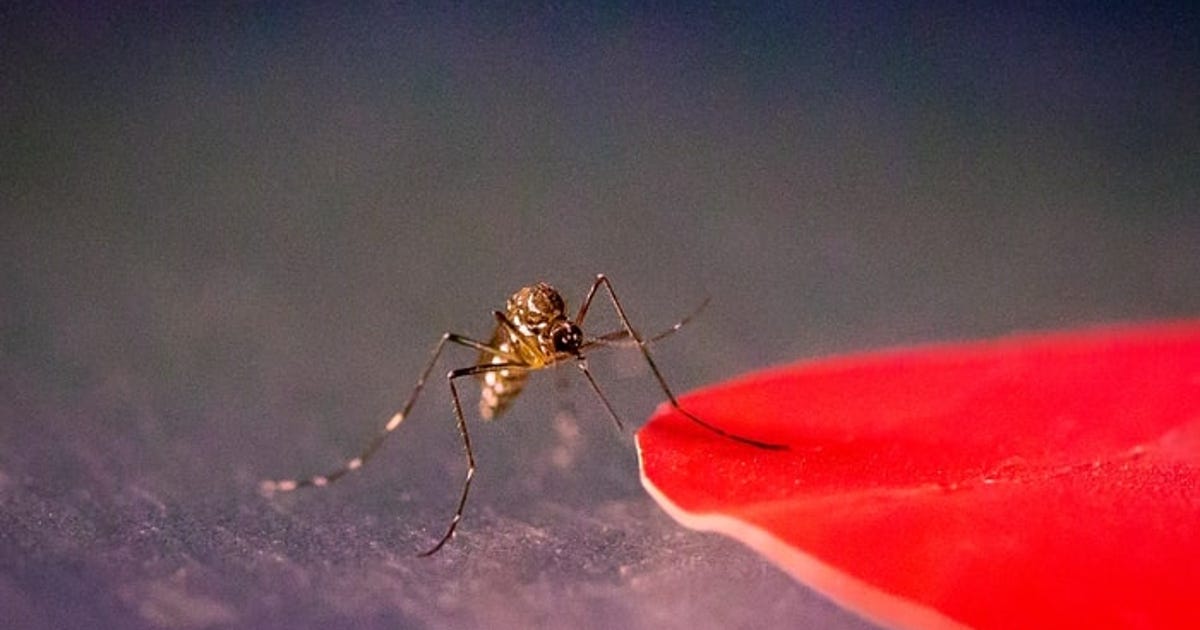

Kiley Riffell
For those who’ve ever felt like a streetlamp on a moist day, imperiled by way of mosquitos that seem to be obsessive about you, chances are you’ll wish to reconsider your cloth wardrobe.
In keeping with a paper printed Friday within the magazine Nature Communications, after catching a whiff of human breath, the pesky bloodsuckers scan the fringe for sufferers by way of pinpointing positive colours: pink, orange, black and cyan. You might be most likely at an advantage draping your self in sunglasses of inexperienced, red, blue and white.
“Consider you are on a sidewalk and also you scent pie crust and cinnamon,” Jeffrey Riffell, a biologist on the College of Washington and senior creator of the find out about, stated in a commentary. “That is more than likely an indication that there is a bakery within reach, and chances are you’ll get started having a look round for it. Right here, we began to be told what visible parts mosquitoes are on the lookout for after smelling their very own model of a bakery.”
Riffell and different researchers examined how mosquitoes react to quite a lot of tones after being uncovered to carbon dioxide – what we breathe out each and every time we exhale. The workforce first positioned into small chambers feminine Aedes aegypti mosquitos, recognized to transmit dengue, yellow fever, chikungunya and Zika virus. Women folk had been decided on as a result of, not like men, they are the vampire-y ones that spoil tropical holidays by way of feasting on our blood.
To start out, the group watched how the caged critters react to stimuli comparable to coloured dots, within the absence of odors. Principally, they did not. Then the researchers repeated the method with a spritz of CO2. In that iteration, with artificial human breath, the mosquitos had been tremendous interested in pink, orange, black and cyan however did not bat an eye fixed when it got here to inexperienced, red, blue and white.
However mosquitos is probably not parsing colours the way in which chances are you’ll think. Scientists don’t seem to be positive the insects can “see” colour the way in which we do – in a similar way to how we will’t “scent” CO2 the way in which they are able to. Alternatively, the colours to watch out for all have an purpose commonality: longer wavelengths at the visual spectrum.
That brings us to a couple unhealthy information.
Human pores and skin, irrespective of pigment, provides off lengthy wavelengths very similar to the ones of red-orange hues. “One of the not unusual questions I am requested is ‘What can I do to forestall mosquitoes from biting me?'” Riffell stated. “I used to mention there are 3 primary cues that draw in mosquitoes: your breath, your sweat and the temperature of your pores and skin. On this find out about, we discovered a fourth cue: the colour pink, which can’t handiest be discovered to your garments, however may be present in everybody’s pores and skin.”
Actually, Riffell experimented with that bit as smartly by way of putting a human hand in a CO2-heavy mosquito cage with, and with out, a inexperienced glove. Certain sufficient, the fairway glove used to be sufficient to serve as as a hide, leaving the insects bored stiff.
There may be additionally relatively bittersweet information. Feminine mosquitos will also be roughly “colorblind” within the presence of CO2 if their genetics code this sort of function. For example, the workforce says there is a mutant pressure of the insects that may’t “see” the scrumptious, lengthy wavelengths.
Palms crossed, the following time you check out a daring pink lipstick or an all-black-everything glance, you come back throughout both a mutant threat or only one oblivious to the tantalizing odor of your breath.
